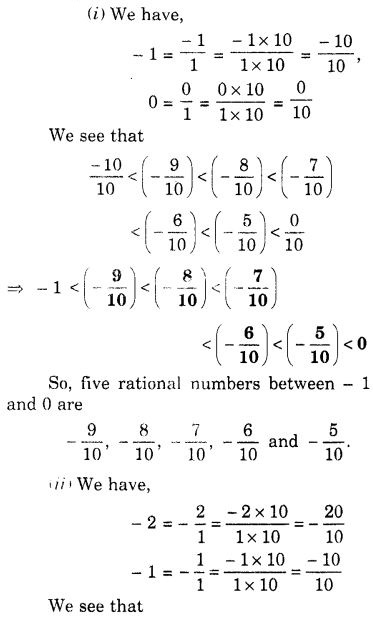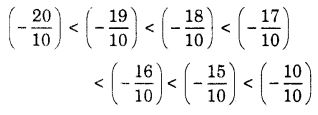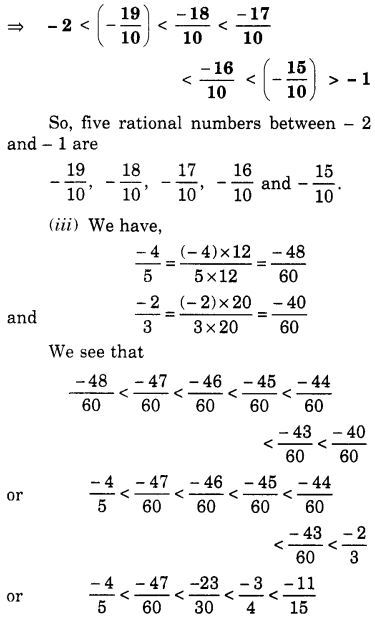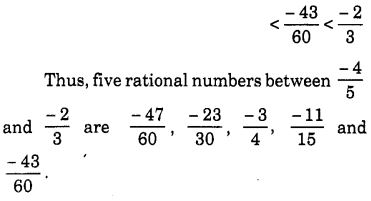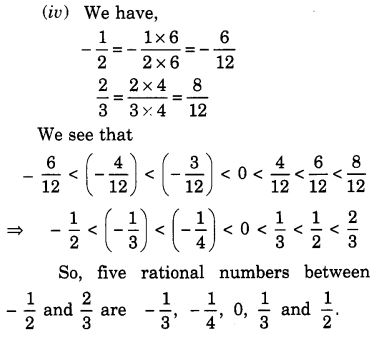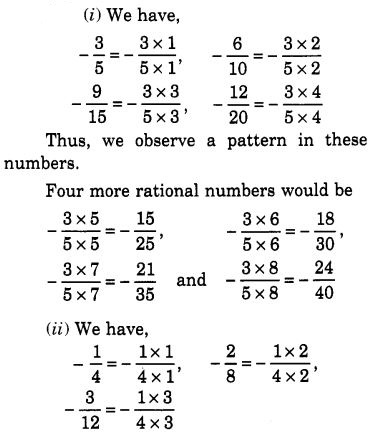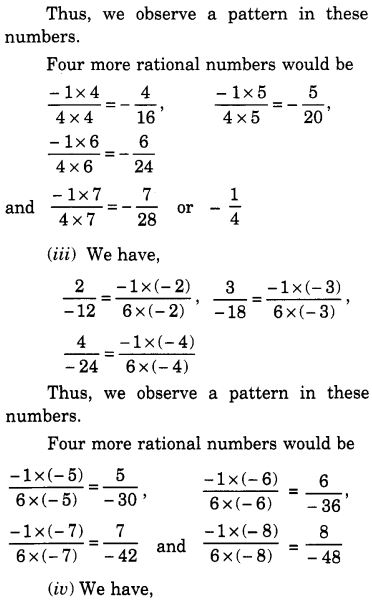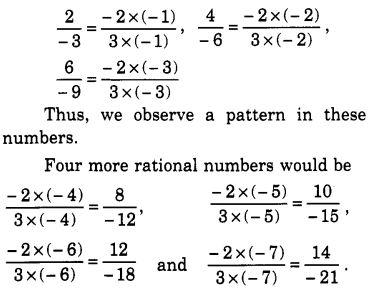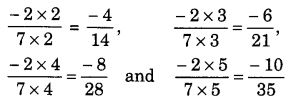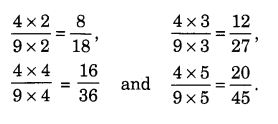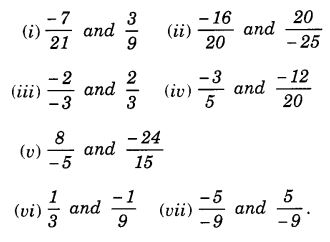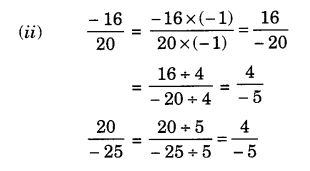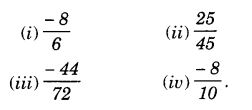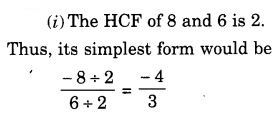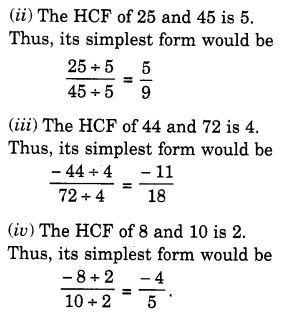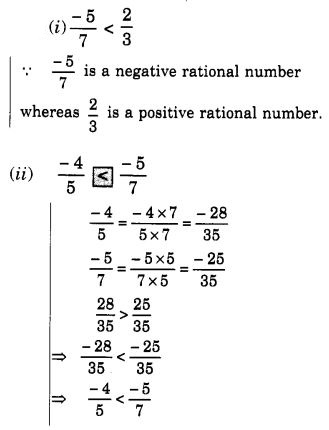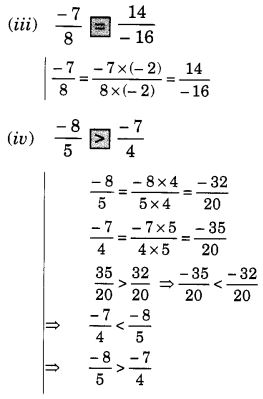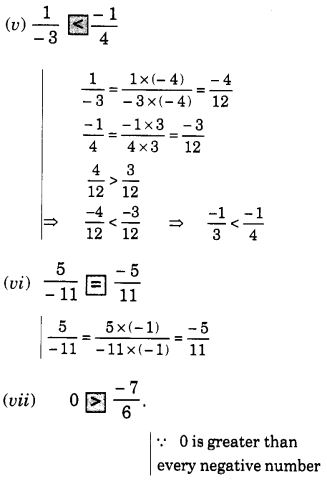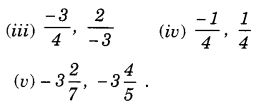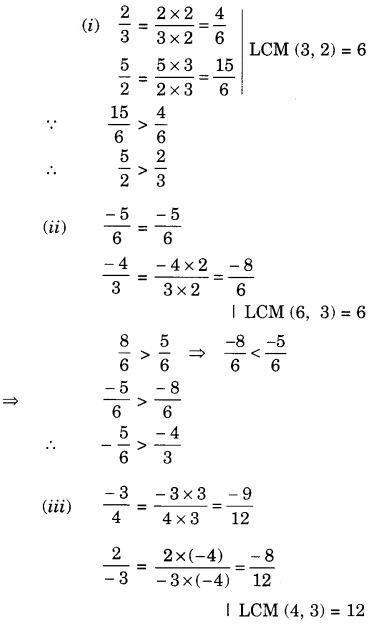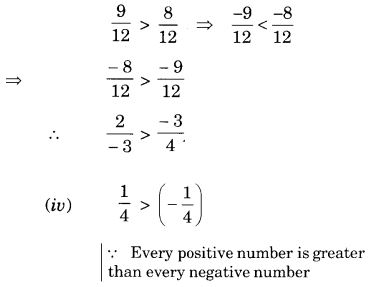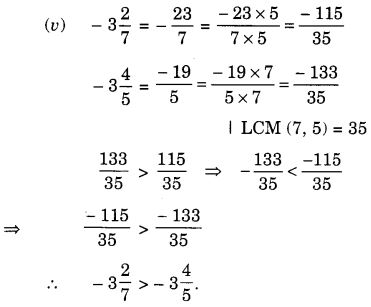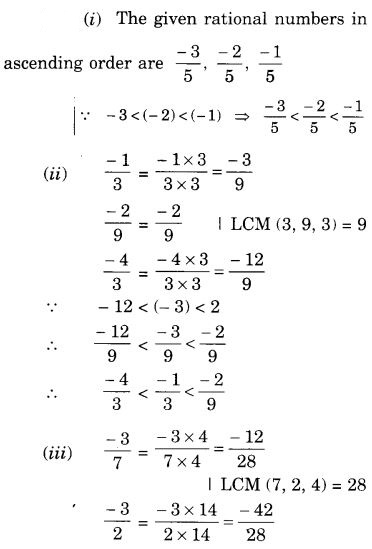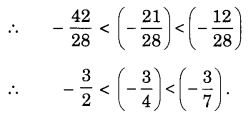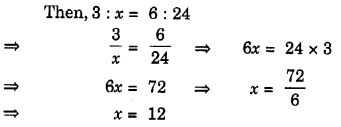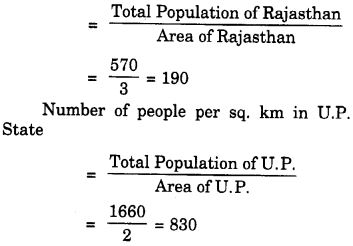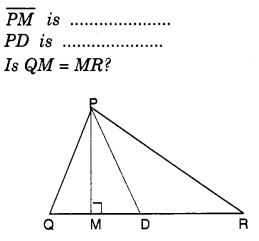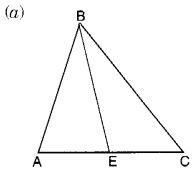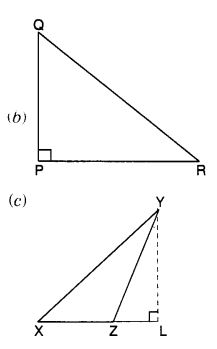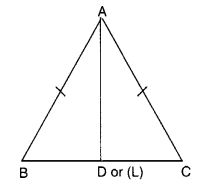NCERT Solutions for Class 7 Maths Chapter 10 Practical Geometry Ex 10.1 are part of NCERT Solutions for Class 7 Maths. Here we have given NCERT Solutions for Class 7 Maths Chapter 10 Practical Geometry Ex 10.1.
- Practical Geometry Class 7 Ex 10.2
- Practical Geometry Class 7 Ex 10.3
- Practical Geometry Class 7 Ex 10.4
- Practical Geometry Class 7 Ex 10.5
| Board | CBSE |
| Textbook | NCERT |
| Class | Class 7 |
| Subject | Maths |
| Chapter | Chapter 10 |
| Chapter Name | Practical Geometry |
| Exercise | Ex 10.1 |
| Number of Questions Solved | 3 |
| Category | NCERT Solutions |
NCERT Solutions for Class 7 Maths Chapter 10 Practical Geometry Ex 10.1
Question 1.
Draw a line, say, AB, take a point C outside it. Through C, draw a line parallel to AB using ruler and compasses only.
Solution:
Steps of Construction
- Draw a line AB.
- Take a point C outside it.
- Take any point D on AB.
- Join C to D.

- with D as centre and a convenient radius, draw an arc cutting AB at F and CD at E.
- Now with C as centre and the same radius as in step 5, draw an arc GH cutting CD at I.
- Place the pointed tip of the compasses at F and adjust the opening so that the pencil tip is at E.
- With the same opening as in step 7 and with I as centre, draw an arc cutting the arc GH at J.
- Now join CJ to draw a line ‘KL’. Then KL is the required line.
Question 2.
Draw a line l. Draw a perpendicular to l at any point on l. On this perpendicular choose a point X, 4 cm away from l. Through X, draw a line m parallel to l.
Solution:
Steps of Construction
- Draw a line l.
- Take any point A on line l.
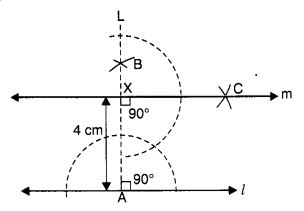
- Construct an angle of 90° at point A of line l and draw a line AL perpendicular to line l.
- Mark a point X on AL such that AX = 4 cm.
- At X construct an angle of 90° and draw a line XC perpendicular to line AL.
- Then line XC (line m) is the required line through X such that m || l.
Question 3.
Let l be a line and P be a point not on l. Through P, draw a line m parallel to l. Now join P to any point Q on l. Choose any other point R on m. Through R, draw a line parallel to PQ. Let this meet l at S. What shape do the two sets of parallel lines enclose?
Solution:
Steps of Construction
- Draw a line l and take a point P not on it.
- Take any point Q on l.
- Join Q to P.
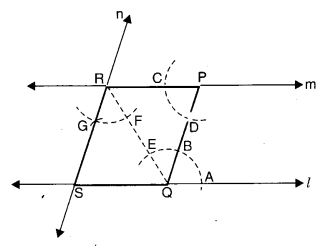
- Draw a line m parallel to line l, as shown in the figure. Then line m || line l.
- Join P to any point Q on l.
- Choose any point R on m.
- Join R to Q.
- Through R, draw a line n parallel to the line PQ.
- Let the line n meet the line l at S.
- Then, the shape enclosed by the two sets of parallel lines is a parallelogram.
We hope the NCERT Solutions for Class 7 Maths Chapter 10 Practical Geometry Ex 10.1 helps you. If you have any query regarding NCERT Solutions for Class 7 Maths Chapter 10 Practical Geometry EX 10.1, drop a comment below and we will get back to you at the earliest.
